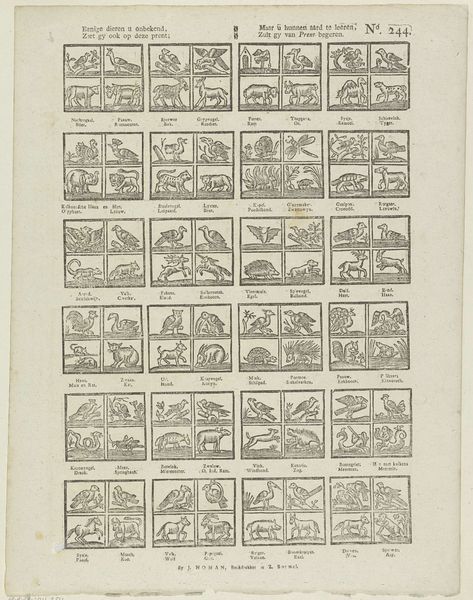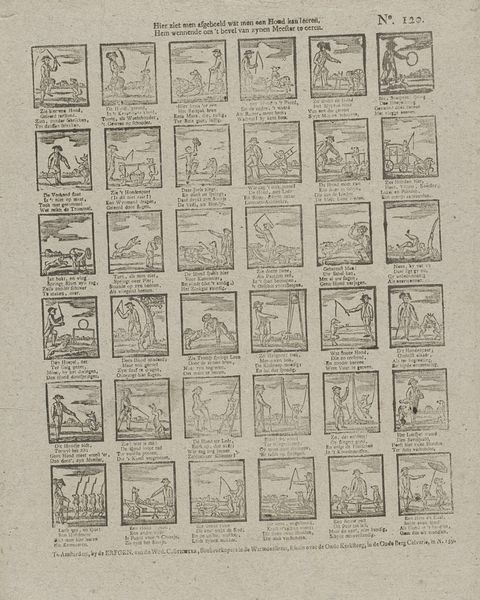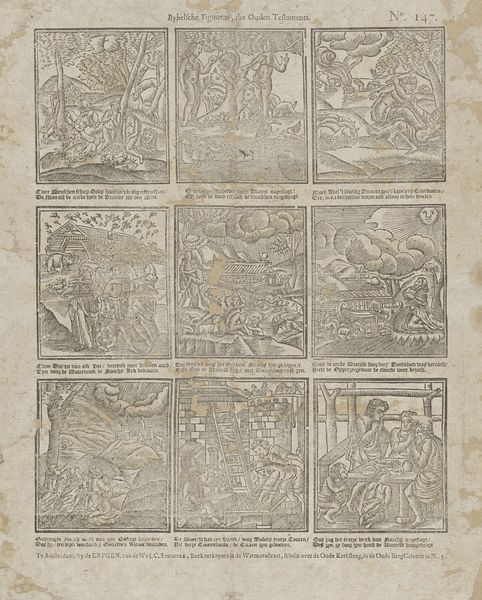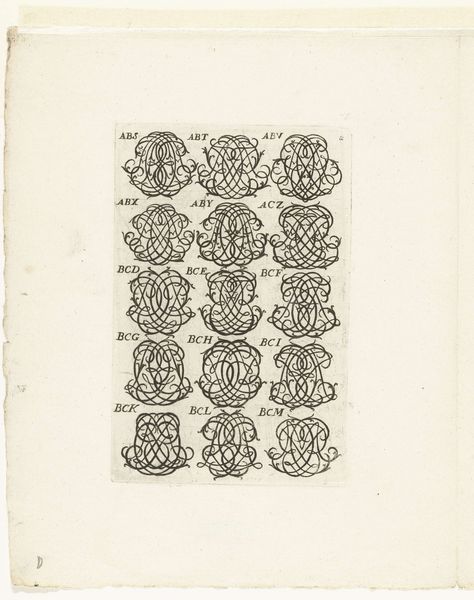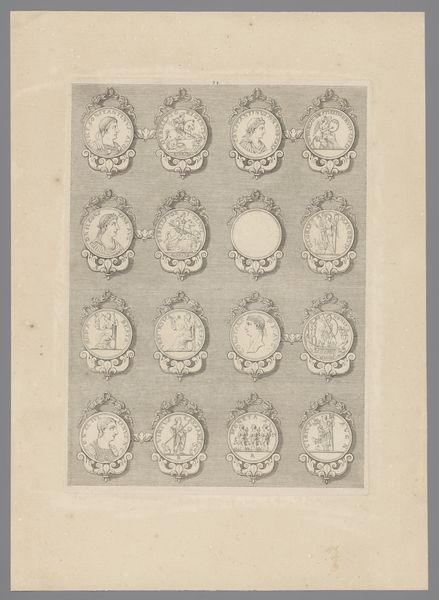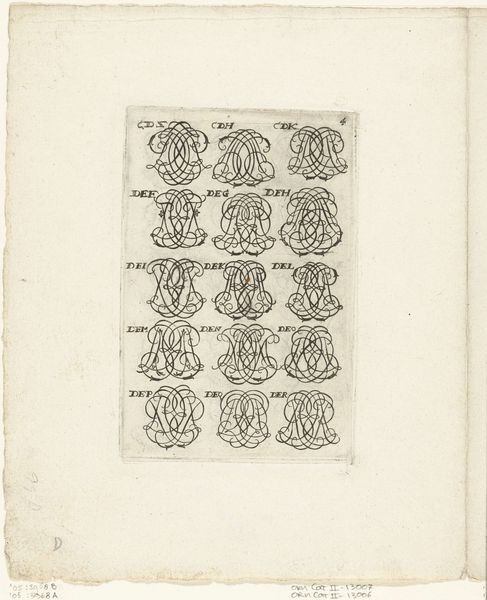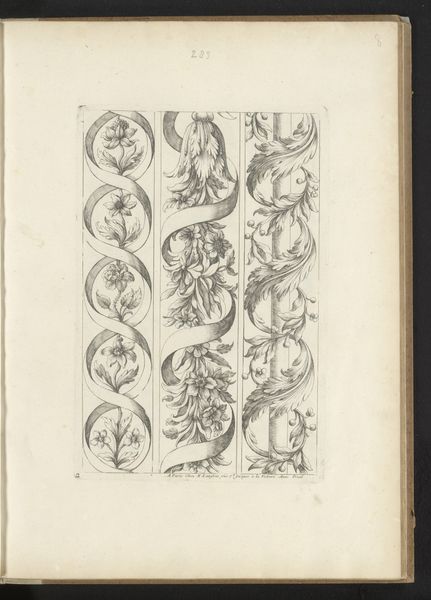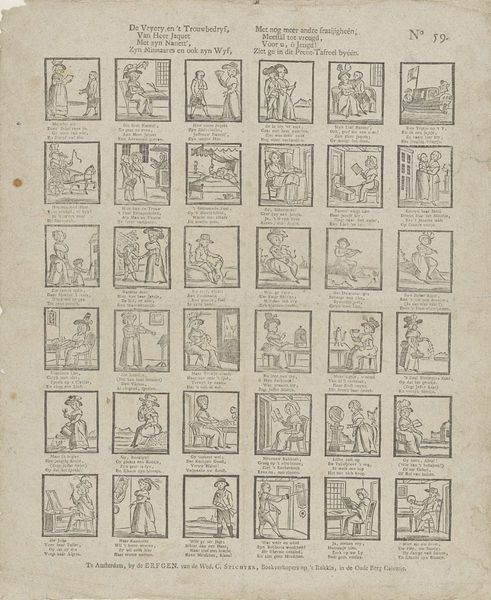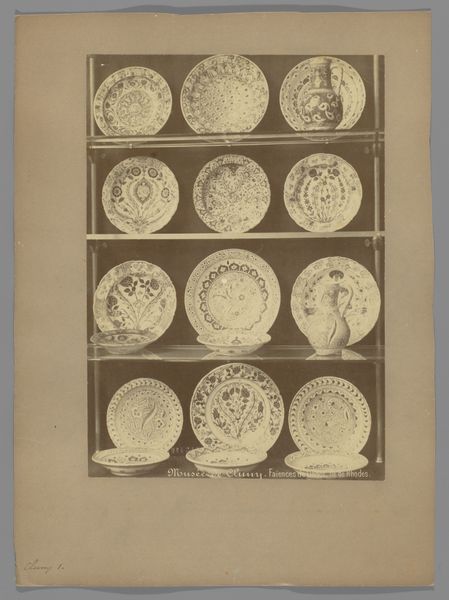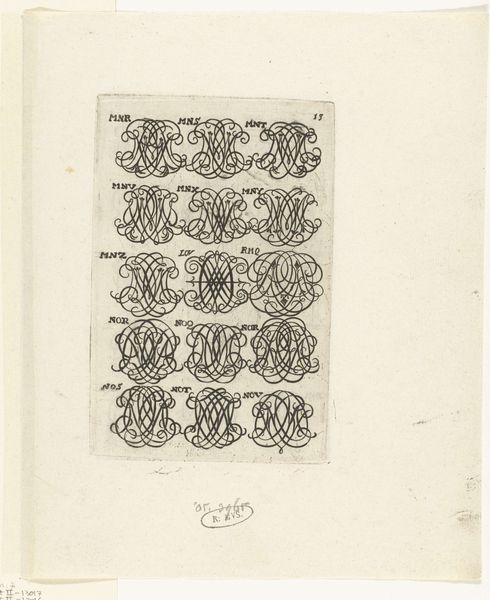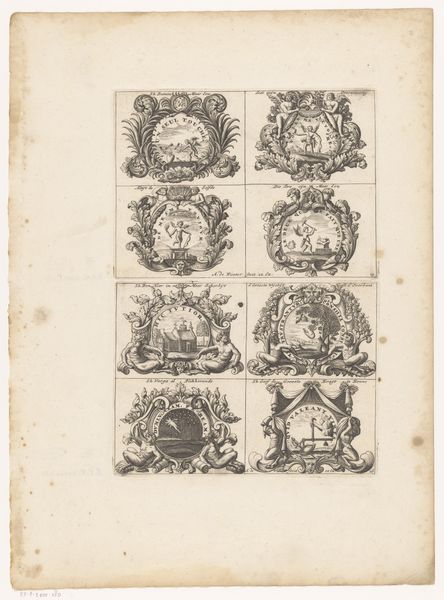
print, engraving
#
portrait
#
dutch-golden-age
# print
#
old engraving style
#
genre-painting
#
engraving
Dimensions: height 400 mm, width 315 mm
Copyright: Rijks Museum: Open Domain
Curator: We're looking at "Nieuwe curieuse snaaken en aardige pourtraitten", which translates to "New Curious Creatures and Nice Portraits." It's an engraving printed sometime between 1806 and 1830. Editor: It’s interesting to see so many images clustered on a single page. There's an almost whimsical feeling created by this grid of characters—who exactly were these individuals to warrant so many pictures of them together? Curator: Right. Well, these sorts of printed sheets were essentially proto-newspapers. Think of this not just as art, but as a commodity circulated amongst the populace, maybe even a sort of caricature sheet meant for broad consumption and enjoyment by those with little access to formal portraits. Editor: Looking closely, some images are far more skillfully rendered than others. There seems to be a hierarchy of quality. What would account for these various stylistic levels within the singular composition? Curator: Good observation. The uniformity of layout belies what was likely a division of labor, the repetitive framing perhaps assigned to less-skilled apprentices while more practiced hands rendered the portraits. Mass production demanded speed, impacting artistic consistency across the sheet. Editor: Do we know why these faces have been arranged like this? Are they from popular plays, or well-known social events of the time? There seems to be symbolism in some of the hats and tools. The imagery almost feels staged, like different stock types put on display in some collection. Curator: Perhaps! The details tell of a distinct material culture, where clothing, tools, and accessories signal rank and affiliation, providing social context, even in a comical manner. Remember, humor, satire and moralising tales were commonly disseminated this way—the theatrical gesture becomes a vital cultural language of communication, doesn’t it? Editor: Yes, the more you look the more intriguing this compilation becomes. Originally, I perceived a quirky mood. I am leaving this thinking now, instead, about class, commerce, production and access to imagery. Curator: Agreed. Thinking about it in those terms really reveals how the print's format becomes essential for understanding the period's social fabric. A glimpse into Dutch popular visual culture, mediated by process and product.
Comments
No comments
Be the first to comment and join the conversation on the ultimate creative platform.

